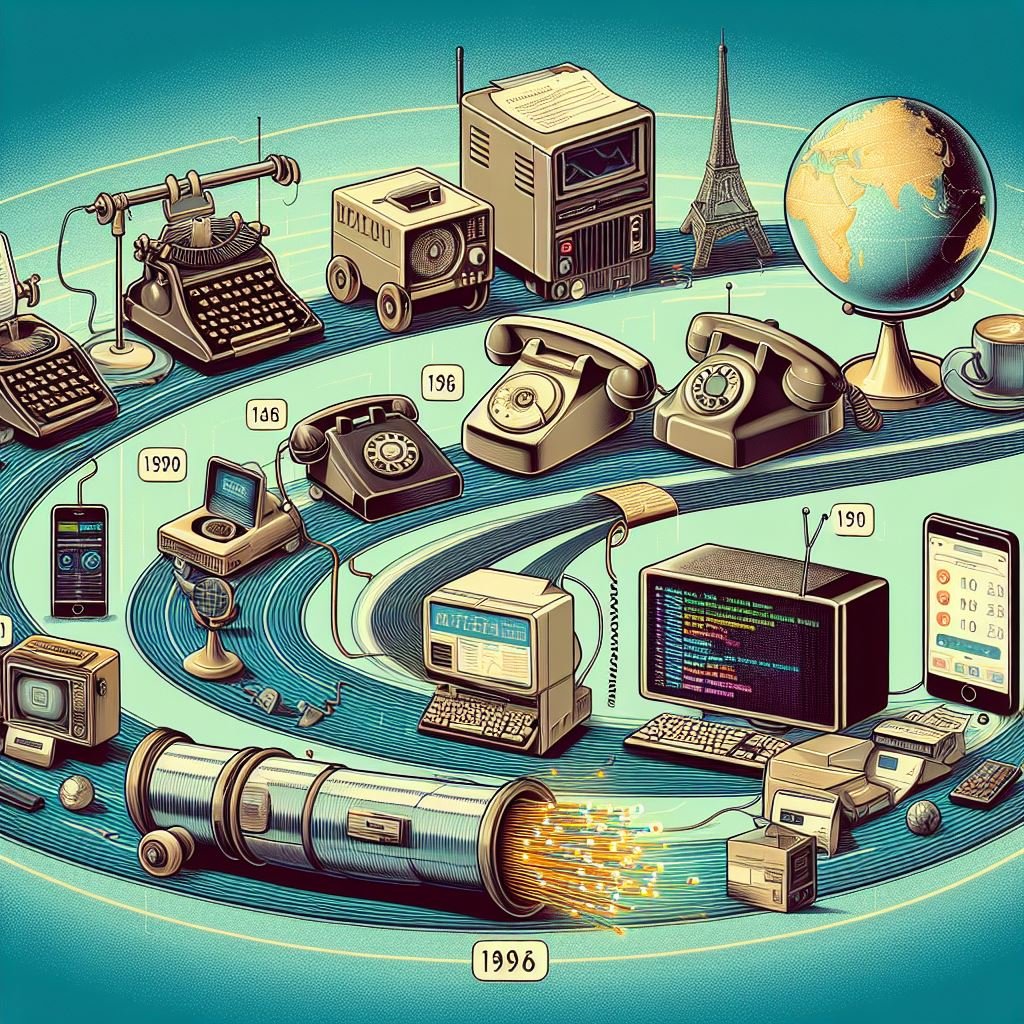Communication technologies have undergone a remarkable evolution over the centuries, revolutionizing the way humans interact, share information, and conduct business. From the humble beginnings of the telegraph to the advent of the Internet, each technological advancement has reshaped societies and economies worldwide. This article delves into the transformative journey of communication technologies, tracing their evolution from the telegraph to the internet and exploring their profound impact on various aspects of human life.
The Telegraph: Pioneering Long-Distance Communication The telegraph, invented by Samuel Morse in the early 19th century, marked the beginning of long-distance communication. Utilizing electrical signals transmitted over wires, the telegraph enabled messages to be sent and received almost instantaneously across vast distances. This breakthrough technology revolutionized industries such as journalism, commerce, and transportation, facilitating faster dissemination of news, coordination of business activities, and management of railway networks.
The Telephone: Personalizing Communication Following the telegraph, the invention of the telephone by Alexander Graham Bell in 1876 brought communication to a more personal level. Unlike the telegraph, which relied on coded messages, the telephone allowed individuals to communicate in real-time through voice transmission. This transformative technology facilitated direct and immediate interaction between people, fostering closer relationships and enabling efficient coordination in various spheres of life, from personal matters to business dealings.
Radio and Television: Broadcasting Information to Mass Audiences The 20th century witnessed the rise of broadcast technologies, namely radio and television, which revolutionized mass communication. Radio, with its ability to transmit audio signals over the airwaves, became a staple for disseminating news, entertainment, and cultural programming to broad audiences. Similarly, television, with its visual and auditory capabilities, further transformed the media landscape, offering a rich and immersive experience to viewers worldwide. These mediums not only entertained but also informed and influenced public opinion on a global scale, shaping societies and cultures in profound ways.
The Internet: Connecting the World Digitally Arguably the most significant development in communication technology, the internet has revolutionized the way information is accessed, shared, and disseminated. Born out of military research in the late 20th century, the internet evolved into a global network of interconnected computers, enabling seamless communication and collaboration across vast distances. Through email, instant messaging, social media, and other online platforms, the internet has facilitated instantaneous communication between individuals, businesses, and organizations worldwide. Moreover, the proliferation of websites and online content has democratized access to information, empowering users to educate themselves and engage in discussions on a wide range of topics.
Mobile Communication: Communication on the Go The advent of mobile communication technology, epitomized by the proliferation of smartphones, has further revolutionized how people connect and communicate. With the ability to access the internet, make phone calls, send messages, and run applications from anywhere, mobile devices have become indispensable tools in modern life. Mobile communication has not only enhanced personal connectivity but has also transformed industries such as healthcare, finance, and transportation, enabling new services and business models that leverage the power of mobility and connectivity.
Challenges and Opportunities in the Digital Age While communication technologies have brought about numerous benefits, they also present challenges and risks that must be addressed. Issues such as privacy breaches, misinformation, cyberbullying, and digital divides pose significant challenges in the digital age. Moreover, the rapid pace of technological advancement can exacerbate existing inequalities and disrupt traditional industries, leading to job displacement and socio-economic disparities. However, these challenges also present opportunities for innovation and collaboration to harness the transformative potential of communication technologies for the betterment of society.
Conclusion: From the telegraph to the internet, communication technologies have continuously evolved, shaping the way humans connect, communicate, and collaborate. Each milestone in this journey has expanded the boundaries of human interaction, transcending geographical, cultural, and temporal barriers. As we navigate the complexities of the digital age, it is essential to harness the power of communication technologies responsibly, ensuring that they serve the collective good and contribute to a more connected, informed, and inclusive global community.
#CommunicationEvolution #TechnologicalRevolution #TelegraphToInternet #DigitalTransformation #GlobalConnectivity #InformationAge #MobileCommunication #DigitalChallenges #OpportunitiesInTech #TechInnovation #InternetImpact #ModernCommunication #DigitalSociety#CommunicationEvolution #TechnologicalRevolution #TelegraphToInternet #DigitalTransformation #GlobalConnectivity #InformationAge #MobileCommunication #DigitalChallenges #OpportunitiesInTech #TechInnovation #InternetImpact #ModernCommunication #DigitalSociety #CyberSecurity #SocialMediaInfluence #DigitalDivide #InnovationJourney #TechEthics #FutureCommunication #InternetOfThings #amoltechnicalguru #amolmahajan

